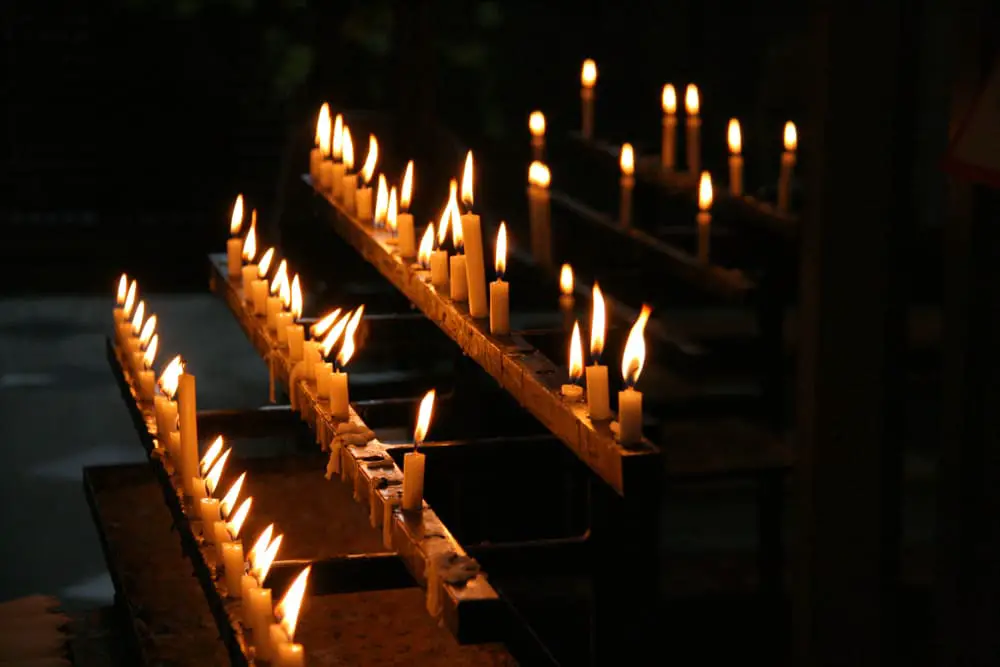Find out the information you need about Why Do Candles Flicker When There Is No Wind in this article, all summarized clearly by us.

Why Do Candles Flicker When There Is No Wind?
As I sat by the dimly lit table, the flickering flame of the candle before me entranced my gaze. The gentle dance of the flame, swaying to and fro, seemed to possess a life of its own. Curiosity sparked within me as I pondered the cause of this mesmerizing undulation in the absence of any discernible breeze.
In this article, we delve into the fascinating scientific phenomenon behind flickering candles, exploring the intricate interplay of physics and chemistry that governs this enigmatic behavior. From the basics of combustion to the latest advancements in flame dynamics, we illuminate the reasons why candles flicker even when there is no wind.
The Nature of Combustion
To understand why candles flicker, we must first delve into the fundamental process of combustion. Combustion is a chemical reaction that involves the rapid oxidation of a fuel source, releasing energy in the form of heat and light. In the case of candles, the fuel source is the wax, which is composed of a mixture of hydrocarbons.
When the candle is lit, the heat from the flame melts the wax near the wick. This molten wax is then drawn up the wick by capillary action, where it is vaporized and mixed with oxygen from the surrounding air. This mixture of vaporized wax and oxygen rises up the flame, where it ignites and releases energy in the form of heat and light.
Instability in the Combustion Process
The combustion process in a candle flame is not a steady-state phenomenon. Rather, it is a dynamic process that involves a continuous feedback loop. As the flame burns, it produces heat, which rises up the flame and melts more wax. This melted wax is then drawn up the wick and vaporized, creating more fuel for the flame.
However, as the flame grows larger, it also becomes less efficient at burning the fuel. This is because the outer layers of the flame are cooler and contain less oxygen, which makes it harder for the fuel to ignite. As a result, the flame becomes unstable and begins to flicker.
The Role of Air Currents
While air currents are not the primary cause of candle flickering, they can certainly influence the behavior of the flame. When air currents pass over the flame, they can cause the flame to lean in one direction or another. This can disrupt the combustion process and cause the flame to flicker even more.
In addition, air currents can also affect the temperature of the flame. If the air currents are cold, they can cool the flame and make it less efficient at burning the fuel. This can lead to increased flickering.
The Latest Advancements in Flame Dynamics
In recent years, researchers have made significant advancements in the field of flame dynamics, which has led to a better understanding of why candles flicker. One important discovery is that the flickering of a candle flame is actually a self-organizing process.
Self-organization is a process in which a system spontaneously develops a regular pattern or behavior without any external input. In the case of a candle flame, the self-organization process is driven by the feedback loop between the combustion process and the air currents.
Tips and Expert Advice for Minimizing Candle Flickering
While candle flickering is a natural phenomenon, there are a few things you can do to minimize it. Here are some tips and expert advice:
- Use a high-quality candle with a thick wick.
- Trim the wick to 1/4 inch before each use.
- Burn the candle in a draft-free environment.
- Use a candleholder that is tall and narrow.
- Keep the candle away from flammable objects.
By following these tips, you can minimize candle flickering and enjoy a more stable and beautiful flame.
FAQs on Candle Flickering
Q: Why do candles flicker more when they are new?
A: New candles have a thicker wick, which burns more slowly and produces a larger flame. This larger flame is more susceptible to flickering.
Q: Why do candles flicker more when the air is cold?
A: Cold air is denser and contains less oxygen, which makes it harder for the fuel to ignite. This can lead to increased flickering.
Q: Is it dangerous to burn a candle that is flickering?
A: No, it is not dangerous to burn a candle that is flickering. However, you should never leave a burning candle unattended.
Conclusion
The flickering of a candle is a fascinating phenomenon that is caused by a complex interplay of physics and chemistry. By understanding the science behind this behavior, we can appreciate the beauty of this simple yet captivating natural occurrence. Whether you are enjoying a romantic dinner or simply relaxing at home, the gentle dance of a candle flame can add a touch of warmth and ambiance to any setting.
Are you interested in learning more about the science of candle flickering? If so, please let us know in the comments below. We would be happy to provide you with additional information or answer any questions you may have.

Image: www.candleers.com
An article about Why Do Candles Flicker When There Is No Wind has been read by you. Thank you for visiting our website, and we hope this article is beneficial.